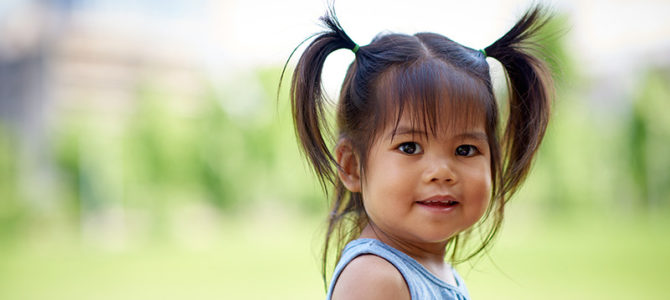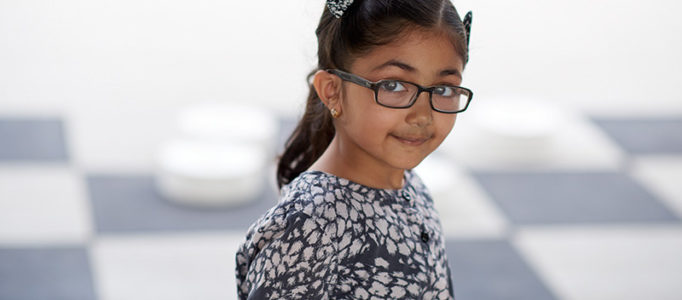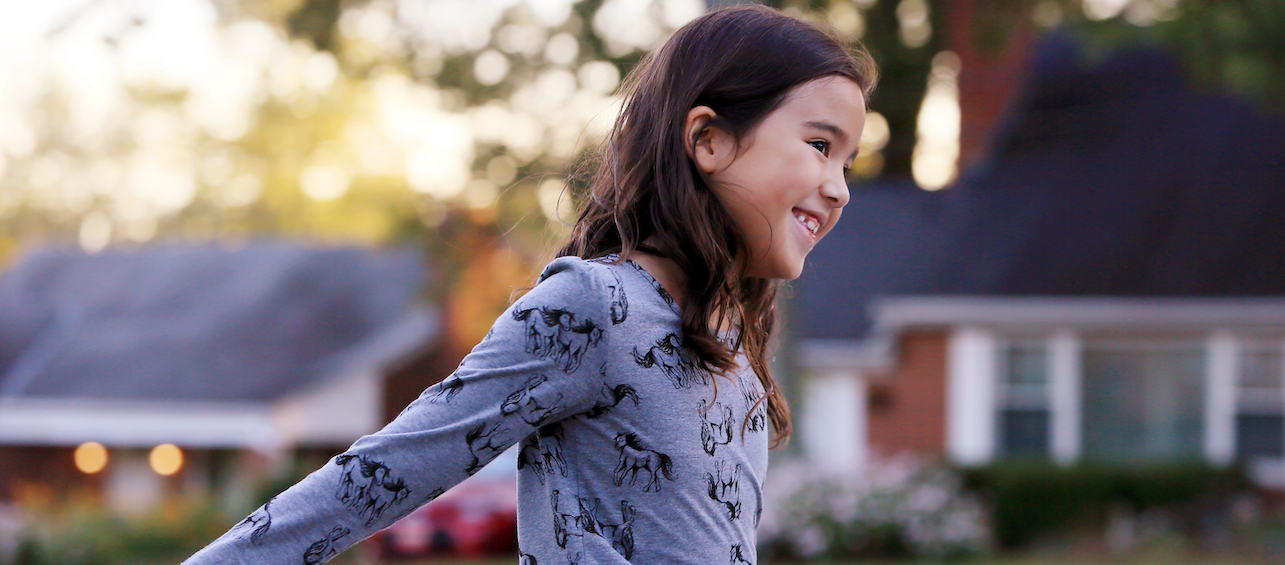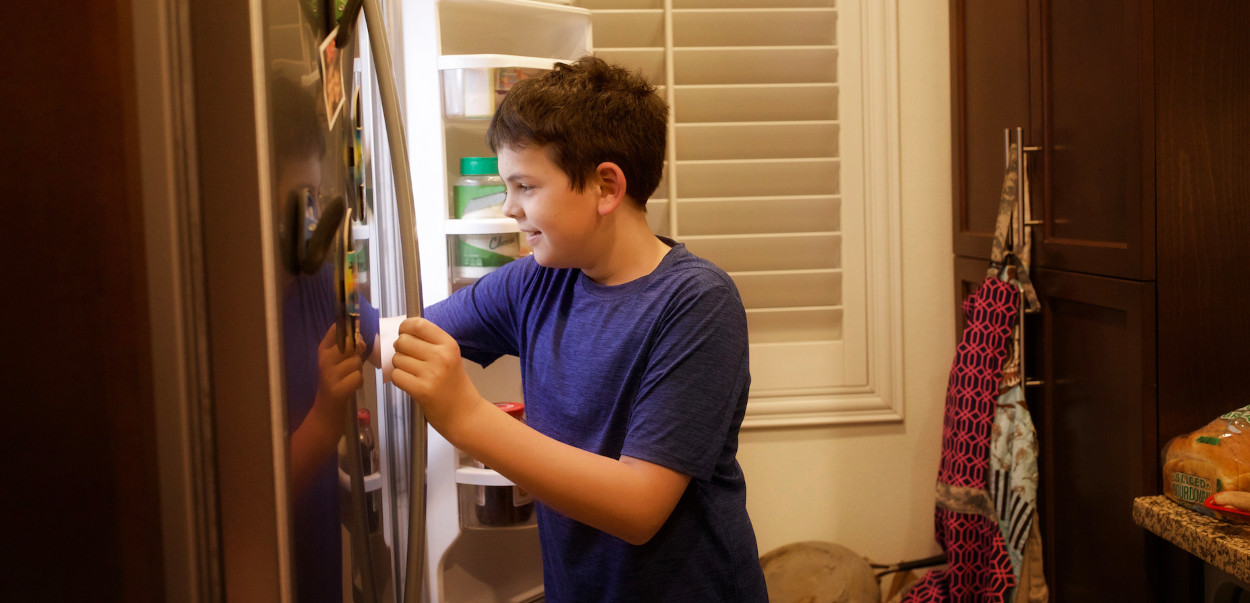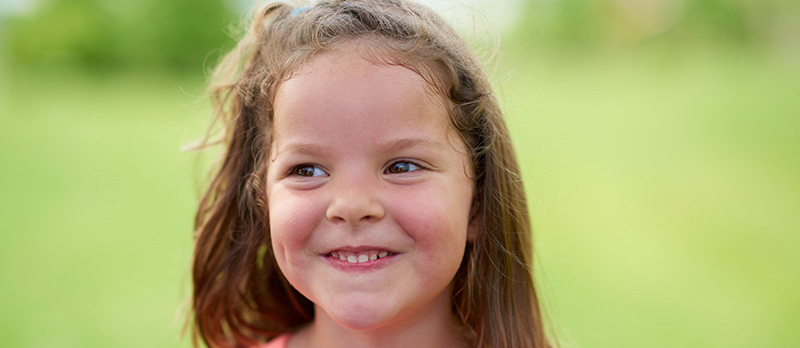Is my child’s language development normal? It’s one of the most frequently asked questions we receive in speech-language pathology.
While every child is different and develops in his or her own way, there are “typical” paths that most babies on up to young children follow.
To help give you a general idea, here are some typical language development milestones broken out by age:
Understanding
- Is startled by loud sounds
- May stop sucking for a few seconds when they hear a sound
- Smiles or moves when someone speaks
- Watches the speaker’s face closely
- Is aware of different voices
- Calms down when they hear a parent’s voice
Talking
- Begins to coo (cooing is making random vowel sounds)
- Makes sounds, which may include an occasional laugh
- Cries and fusses for attention and to have needs met
- Begins to use different cries to communicate different messages (i.e., I’m wet, cold, hungry, tired, etc.)
- Makes sounds when people interact with them
- Makes sounds when talked to
Socializing
- Begins to look into people’s eyes
- Watches faces when people speak
- Smiles and laughs
- Shows interest in people
- Likes to be held
Understanding
- Looks towards a voice or sound
- Likes toys that make sound
- Recognizes own name and some words
- Pays attention to music
Talking
- Takes turns making sounds with a caregiver
- Makes cooing and gurgling sounds when alone
- Becomes louder and raises or lowers voice while cooing
- Makes different sounds to show pleasure or displeasure
- Learns to communicate for something he or she wants–for example, wanting more to eat–by simply making a sound
Socializing
- Copies facial expressions
- Uses sounds to ask for “more”
- Takes turns making sounds with other people
- Is scared of strangers
- Smiles at family members
Understanding
- Stops or turns when his or her name is called
- Recognizes family and pet names
- Understands a few common words
- Pays attention when spoken to
- Looks at pictures
- Pays attention to music
- Responds to “No” or to a change in tone of voice
- Begins to follow simple commands when someone gestures (i.e., “Come here.”)
Talking
- Babbles using certain sounds like /b/, /m/, /w/, /d/, /n/, and /g/. Babbling consists of syllables repeated over and over (i.e., ma ma ma ma, da da da da)
- Makes noise at self in mirror, during play and with music
- Begins to ask for things by reaching and making sounds
- Takes turns copying sounds and syllables (i.e., “ba”) with the caregiver
Socializing
- Copies actions and plays games, such as peek-a-boo and pat-a-cake
- Waves to say “bye-bye”
- Becomes more interactive
- Seems to have his or her own personality
Understanding
- Understands a few more words (including words for body parts) and common objects
- Follows simple commands, like “Give me your shoe”
- Begins to understand the tone of your voice (i.e., “mad” tone versus “happy” tone)
Talking
- Begins to point and gesture more often to show what he or she wants
- Tries again when he can’t be understood the first time
- Imitates new sounds and syllables
- Says “Uh-oh!”
- Uses less babbling and more jargon. Jargon is combination of different sounds and syllables that sound like “jibber-jabber,” such as “badidodiga”
- May begin to use a few real words
Socializing
- Waves more often for “hi” and “bye-bye”
- Wants to play simple games
- Starts talking and playing with others and moves away when finished
Understanding
• Pays attention to a book or toy for about two minutes
• Points to pictures in a book or body parts when named
• Can point to or get many objects when asked
• Easily follows simple commands, such as “get the cup” and “touch your nose”
• Listens to simple stories, songs and rhymes
• Listens more closely to others
Talking
• Says “no” and shakes head for “no”
• Asks for more
• Repeats animal sounds
• Says family and pet names
• Names familiar objects and pictures in books
• Repeats words when asked
• Uses many single words by 18 months of age
• Mixes jargon, gestures and words to communicate
• Uses single words to mean many things. For example, the word “cup” may mean “I want a drink,” “That’s a cup” or “Where’s my cup?”
Socializing
- Enjoys rhymes and finger-play games (i.e., Itsy-Bitsy Spider)
- Repeats other children’s sounds
- Hugs dolls, animals, and other people
- Pretends to feed others
Understanding
- Likes being read to
- Understands almost all the names of everyday objects
- Understands many describing words (“big” versus “little”), action words (“eat” or “run”) and pronouns (“I,” “him,” “her”)
- Begins to understand words in the same group (i.e., dog is an animal)
- Follows two-step commands (i.e., “Go in your room and bring me a book.”) and harder commands (i.e., “Give me the big ball.”)
- Is interested in “why” and “how” things work
Talking
- Uses less jargon and more real words
- Uses different tones of voice for statements and questions
- Uses more speech sounds, such as /f/, /s/ and /sh/
- Has at least 50 words in his or her vocabulary
- Begins to use pronouns (“me,” “I,” “mine”)
- Uses some descriptive words, such as “hot,” “big,” “good,” etc.
- Repeats two and three word phrases
- Begins to put two and three words together, such as “Mommy go,” “Nice doggie,” or “More juice”
- Tries to tell you about something that has happened
- Uses his or her own name
Socializing
- Starts to take turns in conversation
- Uses words to ask for things, ask for help, answer questions, and make comments
Understanding
- Understands longer, harder sentences such as “When we get to the store, we’ll get some ice cream”
- Understands routines. For example, she gets her shoes and coat when you say “We’re going to the store”
Talking
- Talks using short sentences
- Sentences are often “telegraphic,” for example, “Doggie sleep outside”
- Responds to more complex questions (i.e., what/where)
- Often talks to him or herself to practice putting words together
- Uses present tense (i.e., The dog sleeps.)
- Can tell about some feelings
- Sometimes uses /–ing/ and plural /–s/ word endings, and prepositions
- Speech is usually understood by family members
Socializing
- Uses imagination to pretend during play
- Plays alongside others
- Imitates the order of actions within household routines, like washing dishes, drying them, and putting them away
Understanding
- Understands the names of almost all people and objects in familiar environments; common verbs, common adjectives, and prepositions
- Understands how objects in the environment work together
- Understands questions using “who,” “what,” “where,” “why,” and “how”
- Understands spatial (behind, under, next to), comparative (bigger, longer), and number (one, many) concepts
- Can follow 3-step directions, such as “Open the bag, take out the bear, and give it to Mommy”
- Enjoys listening to stories
- Understands indirect language (for example, the concept of “later”)
Talking
- Creates longer and more complex sentences
- Still makes some mistakes in grammar
- Can link sentences together with “and” and “because”
- Can describe recent events in his/her life
- Continues to talk to him or herself to more clearly understand things
- Uses questions to get information
Socializing
- Understands some “conversational rules,” such as ways to start and end a conversation
- Thinks about who she is talking to in conversations
- Reacts to comments and requests of other speakers
- Uses role-playing during pretend and imaginative play
- Sometimes involves other people in pretend play
- Uses words to show emotions, needs, and difficulties
- Speech is understandable to all listeners, although sometimes a few errors happeWhat’s exciting is that parents are the main teachers of speech and language for their kids! They’ll learn more quickly the more often they’re spoken to. You can encourage their language development by inserting these methods into your everyday routines:
- Imitate their words and sounds.
- Model words and phrases for them to repeat. Tell them, “You say….”
- Respond positively to their communication attempts.
- Use simple signs and gestures with speech.
- Sing songs with them.
- Ask them many questions.
- Repeat what they say. Then expand on it. For example, if they say “ball,” you can respond by saying “Here’s a ball.”
- Talk about pictures in books and read to them.
If you’re concerned about your child’s language development, please contact your child’s doctor. He or she may recommend a referral to a speech-language pathologist.
To contact our division of Speech-Language Pathology call 513-636-4341 or email speech.pathology@cchmc.org.

